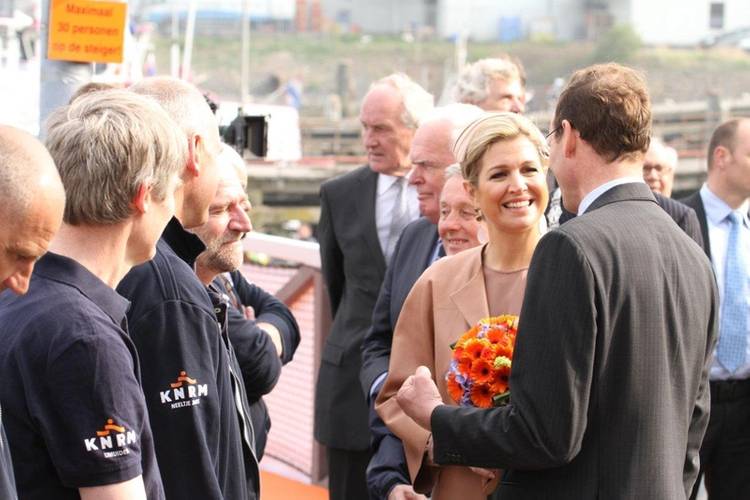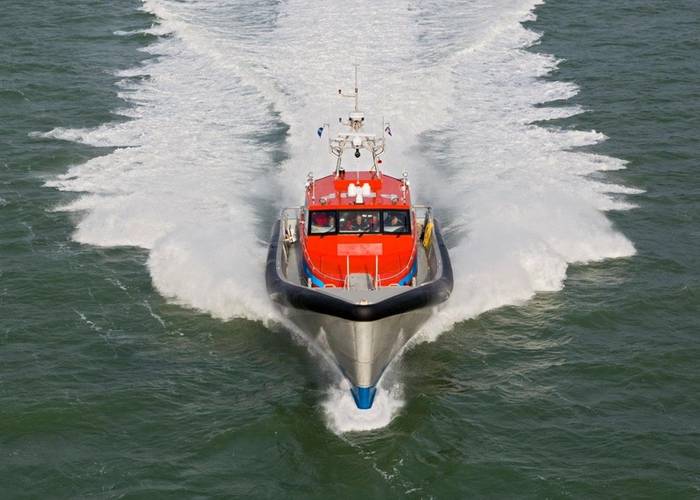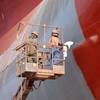Queen Máxima Sponsors Search & Rescue Vessel
Innovative Damen, Delft University of Technology and De Vries Naval Architects gain royal approval
Damen Shipyards Group announced it worked with Delft University of Technology to design and apply the latest in the field of shipbuilding for the new prototype (search and rescue) SAR 1906 lifeboat, built for the Royal Dutch rescue organization KNRM. De Vries Naval Architects contributed to the newbuilding as well. Lady Sponsor Queen Máxima admired the innovative ‘Nh1816’ at its homeport IJmuiden, after she named the vessel on Wednesday, April 2.
Shipbuilder, naval architect, knowledge centre and Royal Dutch rescue organization all joined forces when developing the design for the first of the new generation of self-righting lifeboats. The Nh1816 (length 19.30 meters, width 6.54 meters, depth 1.10 meters) and its successors are to replace the 10 lifeboats of the current Arie Visser Class.
Damen design and proposal engineer John Nieboer added that the Nh1816 has an aluminum hull and a FRP flexible composite lightweight top construction, thus providing pleasant working conditions in a soundproof wheelhouse. The lifeboat’s bow shape allows smooth navigation, even in rough seas and stormy weathers.
The Nh1816 is equipped with two Hamilton 571 water jets, propelled by two MTU 8V2000M84l, 1,790kW (2,400 bhp) engines in separate watertight engine rooms, allowing a maximum speed of 31 knots. When possible, the crew of six can relax in the fully equipped technical room in the front of the vessel. The lifeboat’s radius of action is 185 nautical miles off the Dutch coast and a total of 348 nautical miles. It can take in 120 passengers if need be.
damen.com














